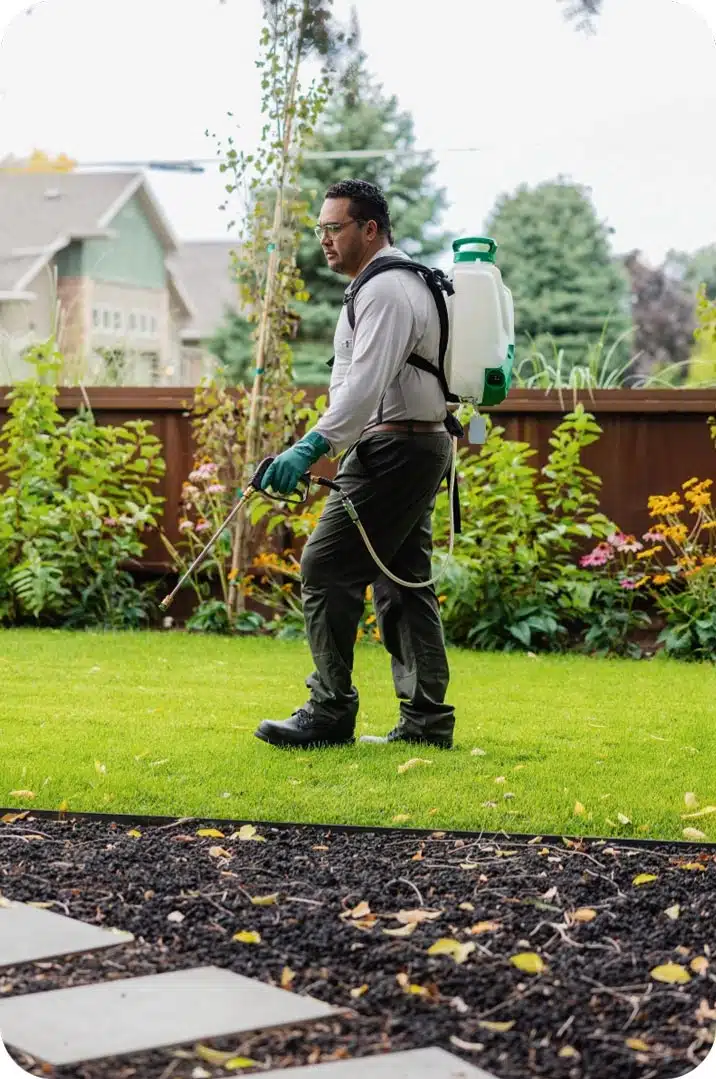Relied On A1 Exterminator Charlotte NC - Comprehensive Pest Solutions
Relied On A1 Exterminator Charlotte NC - Comprehensive Pest Solutions
Blog Article
Bed Pest Therapy Failure: Comparing Chemical Vs. Non-Chemical Solutions
In the world of parasite control, specifically when handling the consistent concern of bed pests, the selection in between chemical and non-chemical therapy services can be an essential one. Both techniques use distinctive benefits and disadvantages, affecting aspects such as effectiveness, safety factors to consider, and total price. By analyzing the nuanced information of each approach, a clearer understanding of which path to seek in addressing a bed bug invasion can be achieved.
Performance of Chemical Therapies
Chemical therapies for bed insect infestations have actually been extensively recognized for their fast and potent efficiency in removing these pests. When considering the efficiency of chemical treatments, it is essential to comprehend that they can give a quick and detailed solution to a bed pest issue.
Furthermore, chemical treatments have the benefit of providing residual effects, indicating that they can continue to eliminate bed insects also after the preliminary application. This residual action is specifically useful in combating any prospective re-infestations. Furthermore, the rapid action of chemical treatments can bring relief to people encountering serious bed pest invasions, allowing them to regain control of their living spaces promptly.
Security Issues With Chemical Solutions
One essential aspect that calls for cautious factor to consider when using chemical solutions for bed bug therapy is making certain the security of owners and the setting. While chemical therapies can be efficient in getting rid of bed bugs, they may position dangers if not managed correctly. Among the primary safety and security concerns with chemical services is the potential injury they can create to human health. Direct exposure to particular chemicals utilized in bed pest treatments can bring about respiratory system issues, skin irritability, or various other damaging responses, especially in people with pre-existing conditions or sensitivities. In addition, improper application or dosage of chemical pesticides can result in harmful residues lingering in the treated location, posturing long-lasting wellness threats to occupants.
Additionally, the environmental influence of chemical options is an additional significant factor to consider. Some chemicals made use of in bed bug therapies might be harmful to useful bugs, wild animals, and ecosystems if they seep into the soil or water supply. It is crucial to utilize chemical therapies judiciously, complying with safety and security standards, and thinking about less harmful options to minimize these risks and make certain the efficient and safe monitoring of bed insect problems.
Advantages of Non-Chemical Approaches
Thinking about the prospective security concerns and ecological impact linked with chemical remedies for bed pest therapy, exploring non-chemical methods presents an encouraging choice with several distinct benefits. Non-chemical treatments are ecologically pleasant, as they do not contribute to air or water air pollution, making them a sustainable selection for pest control.
In addition, non-chemical services can be efficient in targeting bed insects, consisting of hard-to-reach areas where chemical therapies may not pass through. Techniques such as warmth therapy, vacuuming, steam cleansing, and mattress encasements give extensive elimination without making use visit this website of dangerous chemicals. look these up Additionally, non-chemical strategies can be much less disruptive, needing minimal preparation and permitting quicker reentry into treated locations. Generally, choosing for non-chemical bed pest treatment methods not just prioritizes safety and security and ecological protection however additionally makes sure efficient and comprehensive pest control.
Limitations of Non-Chemical Treatments

Additionally, non-chemical therapies commonly call for multiple applications to attain effective eradication. This can be time-consuming and may not constantly ensure total elimination of all bed bugs and their eggs, specifically in hard-to-reach or surprise areas.
In addition, the success of non-chemical treatments greatly counts on proper implementation and thoroughness, which can be challenging for people without expert expertise. Insufficient application of non-chemical methods may cause incomplete removal, leading to relentless problems and the requirement for extra treatments.
As a result, while non-chemical therapies have their advantages, it is necessary to acknowledge these limitations and consider them when identifying the most reliable technique for handling bed insect problems.
Price Comparison: Chemical Vs. Non-Chemical Options
Offered the restrictions related to non-chemical treatments, a vital facet to review check my source in the context of bed pest monitoring is the price comparison in between chemical and non-chemical choices. Chemical therapies generally include the application of pesticides by specialists, which can range from $250 to $900 per room, relying on the intensity of the invasion and the size of the location to be dealt with. In comparison, non-chemical therapies like warmth treatment or vapor can be much more costly, with prices varying from $1,000 to $6,000 for a whole home. While the first price of chemical treatments may appear reduced, numerous therapies might be needed to totally eliminate the infestation, potentially enhancing the general expense. On the various other hand, non-chemical options might provide an extra lasting and eco-friendly solution, although they can be cost-prohibitive for some people. Ultimately, when considering the cost of bed insect therapy choices, it is essential to consider the upfront costs versus the performance and long-lasting sustainability of the selected approach.
Conclusion

Considering the potential safety concerns and ecological impact associated with chemical remedies for bed insect treatment, discovering non-chemical methods provides an appealing choice with several distinct advantages.Provided the constraints associated with non-chemical treatments, a necessary aspect to assess in the context of bed insect management is the cost comparison between chemical and non-chemical choices. In contrast, non-chemical treatments like warm therapy or heavy steam can be extra pricey, with expenses ranging from $1,000 to $6,000 for a whole home. While the preliminary cost of chemical treatments may appear reduced, several treatments may be required to totally remove the problem, potentially boosting the overall price.In final thought, when comparing chemical and non-chemical bed insect treatment alternatives, it is essential to take into consideration efficiency, security, advantages, limitations, and price.
Report this page